The Mombasa-Nairobi Railway and the Future of Kenya
By Hu Yifeng
[Kenya] Jeanne Akoth Ong’iyo
My friend, please listen to my long story of the railway.
It consolidates friendship and it brings hope.
My hometown is more beautiful day by day,
My compatriots are more high-spirited day by day.
These are the lyrics from the“Song of the Mombasa-Nairobi Railway – A Railway to My Hometown”by Kenyan singer Sudi Boy.
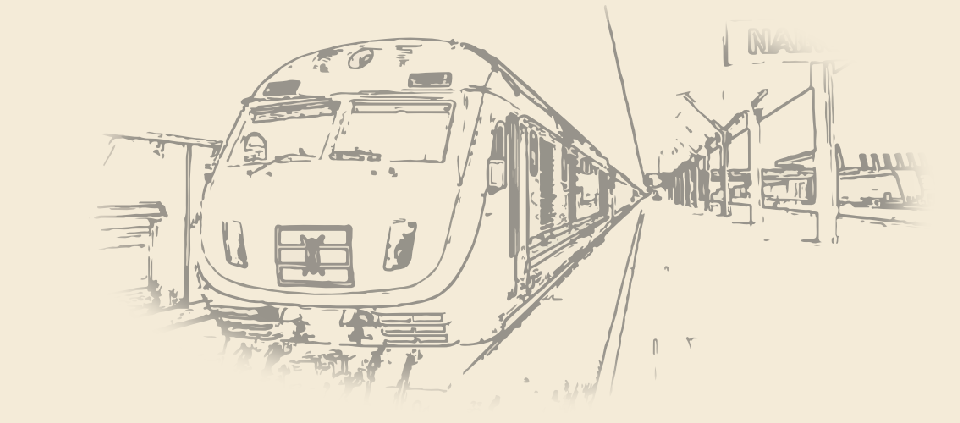
The railway he sings about is the Mombasa-Nairobi Standard Gauge Railway (SGR), the first railway in Kenya since independence. It connects Kenya’s port city Mombasa in the east with capital city Nairobi in the west.
It took less than three years for the railway to be built, but for Kenya, it had been a long wait for a century...
A Century-Old Dream Comes True
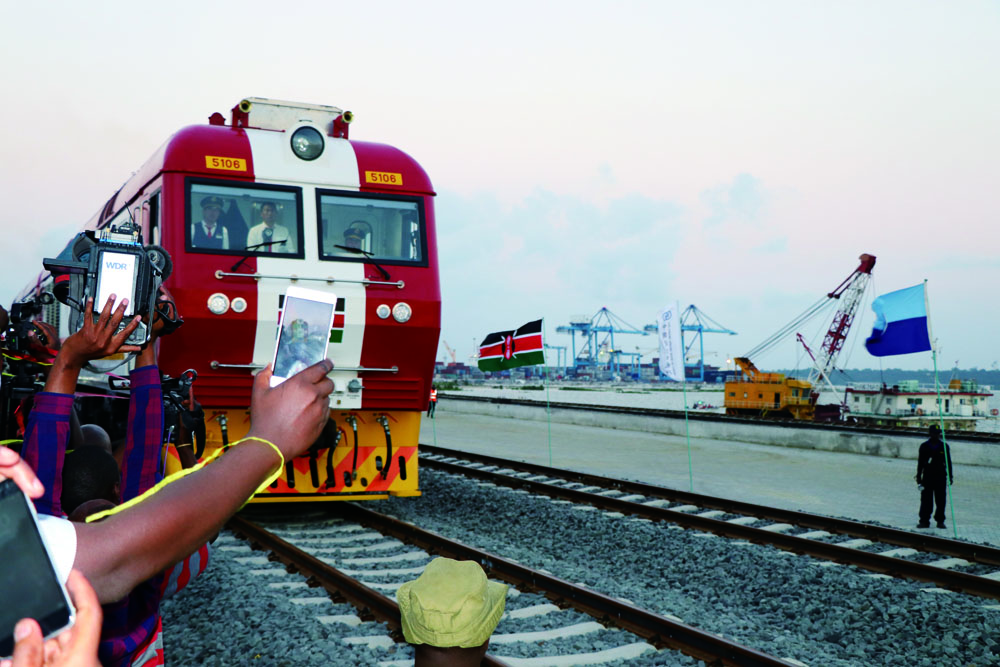
The first train begins its journey on the Mombasa-Nairobi Railway.
Mombasa and Nairobi were connected by a narrow-gauge railway (with a 1-meter track gauge) built in 1896. Due to disrepair and aging equipment, its average speed was only 22 kilometers per hour and it took 21 hours to complete the whole journey. Besides, the operation was unstable and the railway would be frequently out of service for several days at a time. There were also accidents such as derailments and collision with animals.
The narrow-gauge railway was not able to meet the growth demands of the Port of Mombasa, either. The largest port in eastern Africa, Mombasa has 17 international routes and does business with 80 ports around the world. Most of the cargo in and out of East Africa is handled at this port. With the limited capacity of the narrow-gauge railway, most of the cargo had to be transported by road. When the roads were jammed due to excessive traffic, there was delay in transporting the cargo to or from the port and it would come to a standstill, which hampered the development of Mombasa and Kenya at large.
It was a century-old dream of Kenyans to have a new railway. President Uhuru Kenyatta attaches great importance to the new railway. He attended the launch of the project and showed his strong support by making quarterly inspections of the different sections of the railway and dealing with problems at on-site meetings with the heads of different departments.
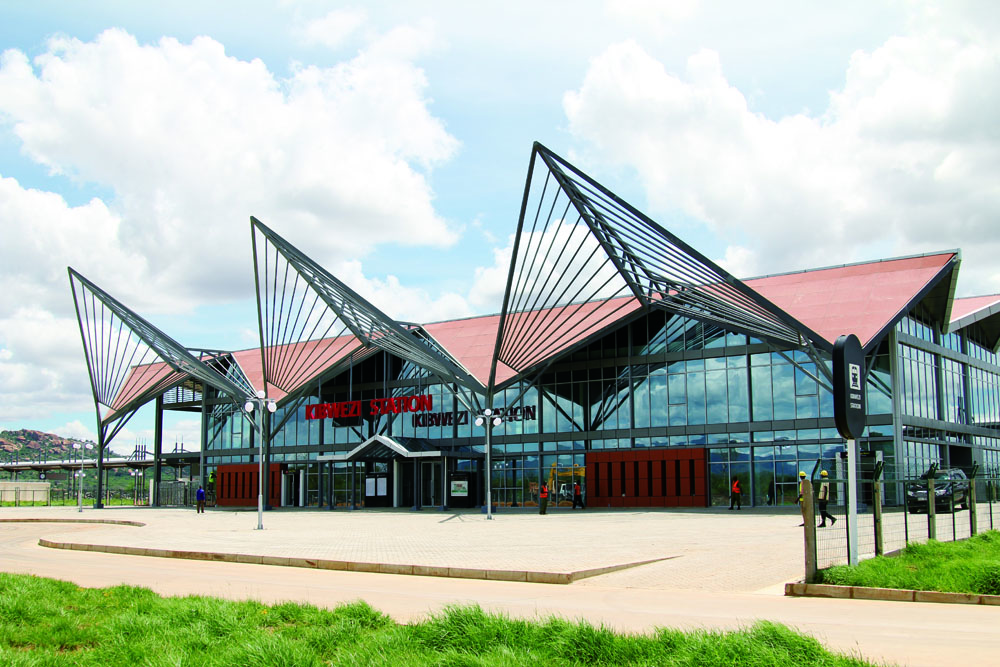
Stations with distinctive features on the Mombasa-Nairobi Railway
On May 31, 2017, the long-awaited Mombasa-Nairobi Railway was finally ready for commercial operation. President Kenyatta and his entourage were on board when the first passenger train made its maiden trip, welcomed by tens of thousands of local people.
“After 122 years, Kenyans have got their new railway at last,” President Kenyatta said, watching the crowds who were all dressed up and singing and dancing. “We are going to open a new chapter.” Later that evening and early next morning, Kenyatta made five tweets on Twitter, saying how happy he was with the experience on the new railway.
Women Train Drivers – the Pride of the Nation
The Mombasa-Nairobi Railway has changed the life trajectory of ordinary people like Alice. She is Kenya’s first female train driver. She was also the driver of the first train that President Kenyatta travelled on. Alice has become a household name in Kenya.
“On the day the SGR opened, President Kenyatta praised us as the ‘pride of the nation’,” Alice recalled with happiness and pride. “We thank China for helping us build the SGR and write a new page in Kenya’s history.”
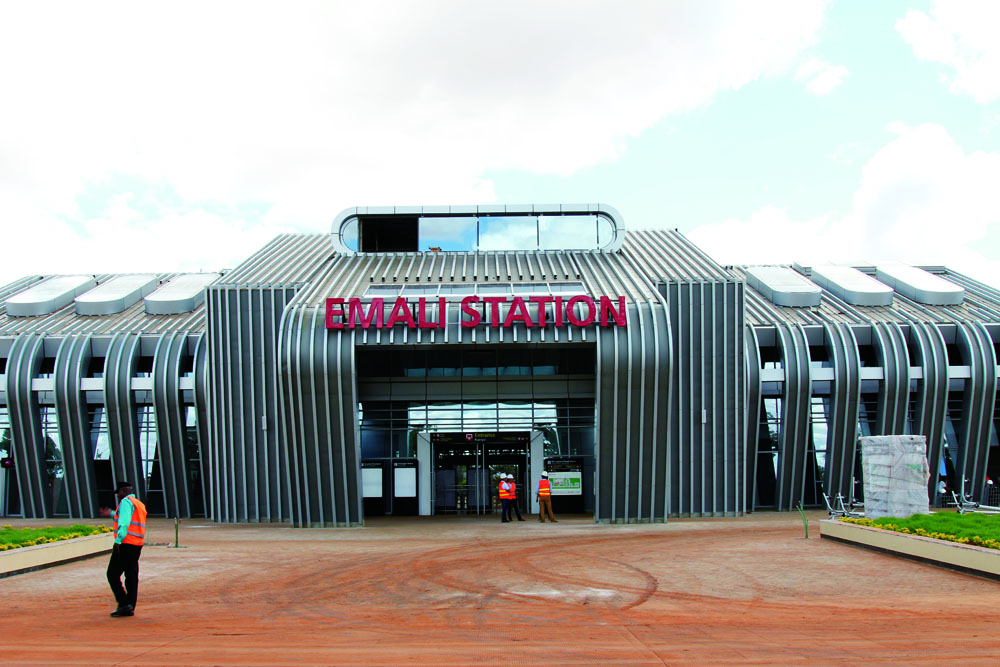
Stations with distinctive features on the Mombasa-Nairobi Railway
Alice has learned Chinese at the Confucius Institute at Kenyatta University. In 2017, she passed the examination to become an SGR train driver. With six others, she was sent to China for the training. After 50 days of lectures and simulation training, they became familiar with the structure of the locomotive and its working principle, as well as the standard procedures of driving, repair and maintenance. After returning to Kenya, they practiced driving the actual train repeatedly before they were awarded the professional certificates to become the SGR’s helmswomen.
If you travel on the SGR, you will find that all the conductors are local employees. The women’s uniform is in three colors, yellow, red and black, complete with golden silk scarves. The men wear a dark blue uniform, with ties in three colors, red, black and green, the colors of Kenya’s national flag.
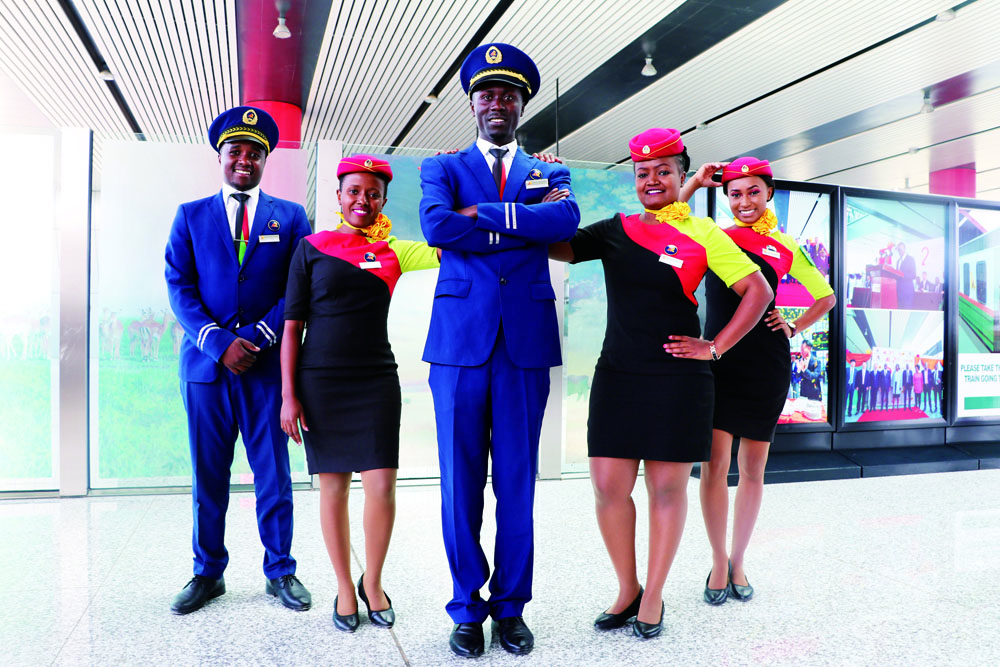
Train conductors in their resplendent uniform on a Mombasa-Nairobi Railway platform
As a Chinese saying goes, “Give a man a fish, and you feed him for a day. Teach a man to fish, and you feed him for a lifetime.”
In constructing the SGR, Chinese builders brought knowledge, technology and experience to the African continent far from their home and became friends and teachers of the local employees. China Road and Bridge Corporation (CRBC), the general contractor responsible for the construction and operation of the railway, has provided financial support for 100 outstanding Kenyan high school graduates to receive railway-related higher education in China. In addition, the company has built a local training base and a railway college to train professionals for Kenya’s railway development.
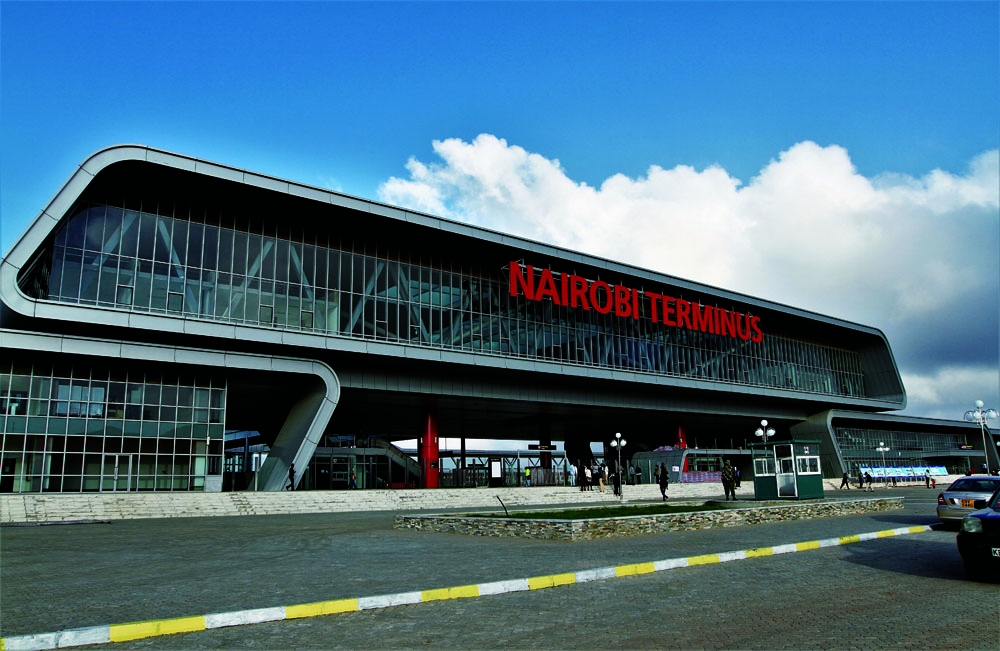
Stations with distinctive features on the Mombasa-Nairobi Railway
In 2017, My Railway, My Story, a documentary by Xinhua News Agency on the railway, premiered on Kenyan state television during prime time. In just five days, more than 30 million viewers watched the documentary. It was widely appreciated because it brought before the public eye the builders who were involved in the construction and operation of the railway, their pride in the achievement and how their dreams came true through their involvement in the project.
A Green Railway
If you were a giraffe or a zebra, how would you react to a railway and adapt to a life with a railway in it?
It might seem a strange thing to think but for the SGR builders it was not strange at all since they had to put themselves in the shoes of wild animals and anticipate how the latter would react.
The SGR traverses the Tsavo National Park, Kenya’s largest wildlife reserve, and ends in Nairobi, one of the few capitals in the world that possess a nature reserve. The vast areas along the railway are inhabited by almost all the animal species in Africa. The natural ecological environment is extremely precious.
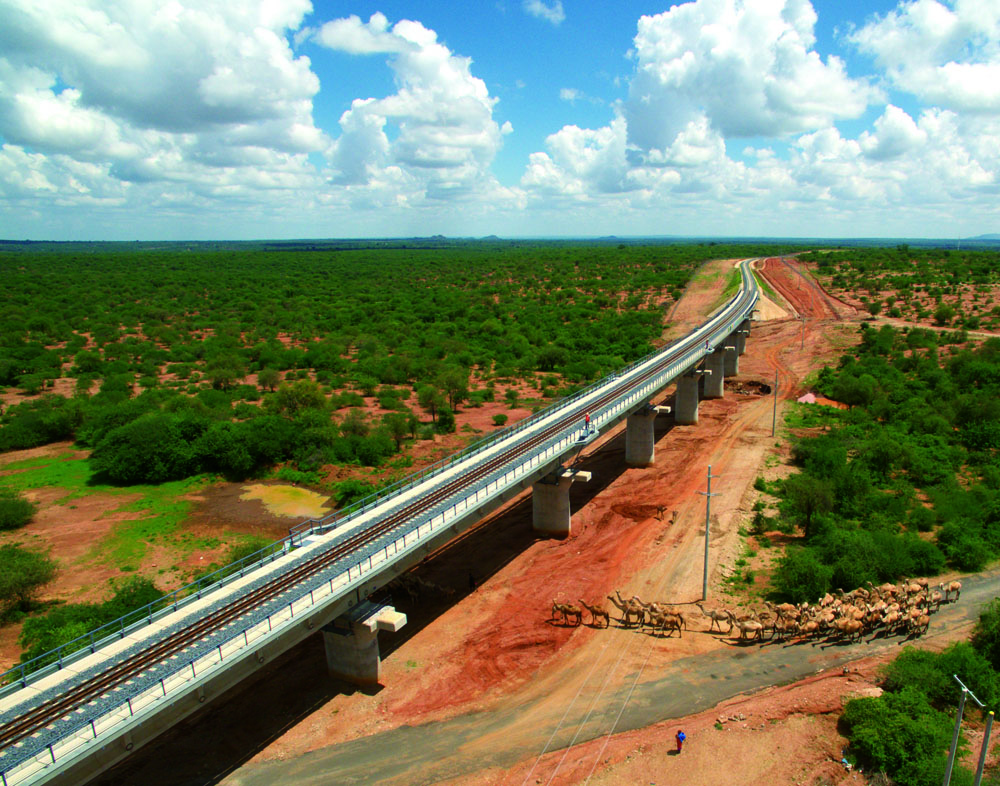
An embankment and underpass for migrating herds
It is commonplace for the animals to stroll by the railway.
Initially, the SGR builders had to figure out how the railway could operate in harmony with the teeming wildlife.
During the construction, the CRBC implemented extremely stringent standards and hired professional companies to carry out environmental impact assessments. The digging for earthwork along the line and other construction work were carried out during the day. Construction was prohibited at night in order not to disturb the wild animals. At the Tsavo National Park, viaducts and embankments were built to elevate the SGR above ground level, while underpasses enabled the wild animals to pass safely underneath.
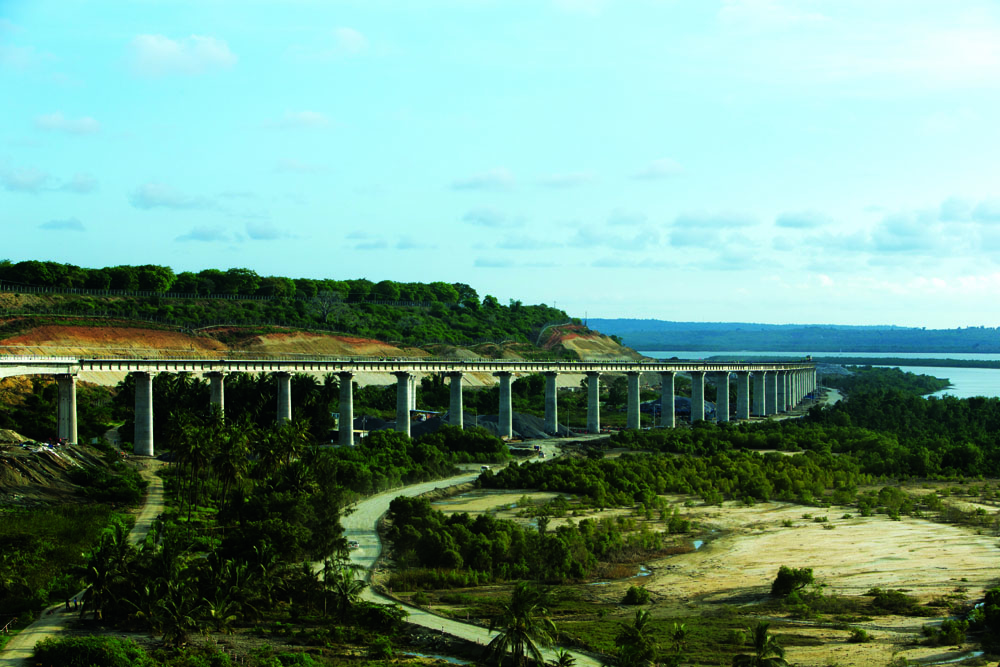
An embankment of the Mombasa-Nairobi Railway
To protect migrating herds, the builders painstakingly designed 14 large animal underpasses, each seven meters high to allow giraffes to pass without having to bend their heads. They also built more than 100 culverts, which would provide drinking water for the wild animals or serve as underpasses for the small animals. At the national park and wetland sections, protective fences and embankments were built to keep the wild animals away from the railway line.
Part of the SGR passes through the Mombasa Mangrove Wetland Park. For this section, the builders scaled down the number of mangroves that had to be cut and constructed culverts in advance so that seawater could flow to the construction areas normally and water the mangroves. After the completion of the project, the mangroves were as luxuriant as ever.
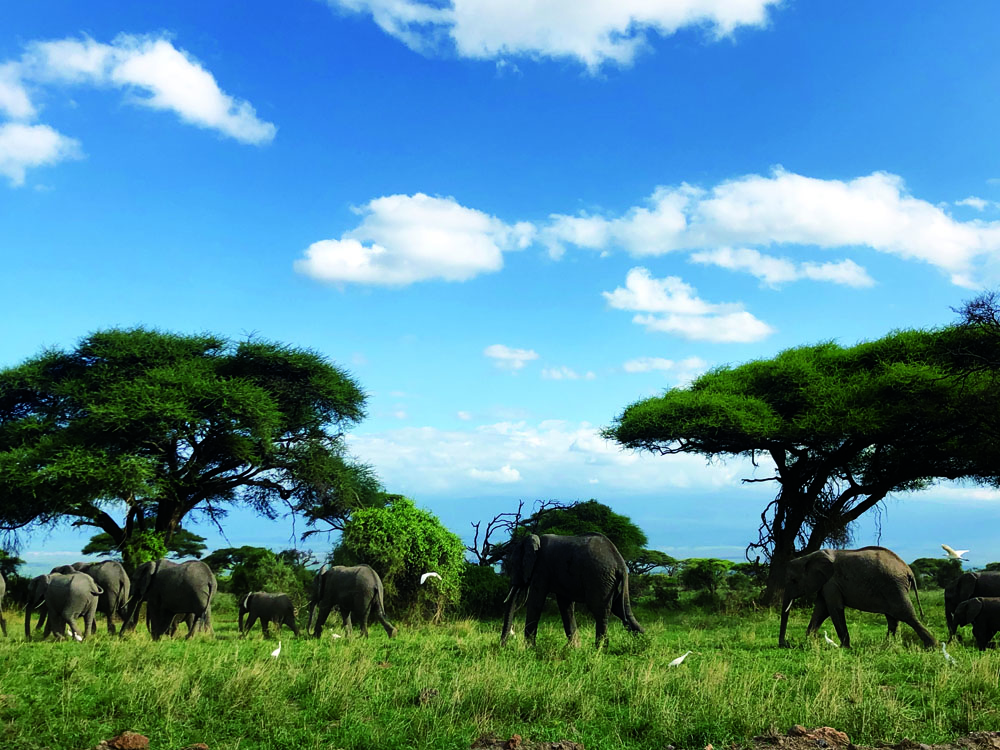
An elephant family under a wattle tree
The builders put their hearts into protecting the local natural environment. During the construction, there were some remarkable incidents.
Once, a wild elephant fell into a natural pit inside the forest while drinking water. Alerted by the Kenya Wildlife Service, the SGR’s management rushed a rescue team to the scene and they succeeded in hauling out the elephant after more than five hours of labor.
Their work was appreciated by wildlife organizations like Kenya Wildlife Service and World Animal Protection.
Today, wild animals such as giraffes, zebras and elephants have become used to the rail tracks and the passing trains.
The SGR’s harmonious coexistence with the wildlife makes it unique.
A New Era of Development
The town of Voi, about 150 kilometers northwest of Mombasa, is an important node on the Mombasa-Nairobi Railway. Its fate remains linked with the railway. In the era of the dysfunctional narrow-gauge railway, the town had been declining but the SGR has made it prosperous.

Stations with distinctive features on the Mombasa-Nairobi Railway
Mali, a retired Voi local government official, has lived in the town for nearly 50 years. He witnessed the decline of the town but now, with the SGR, he is optimistic about its future. “I’m very happy with the new railway built by our Chinese friends,” he said. “Tremendous changes have taken place in the town over the last two years and the residents have become prosperous.”
The SGR has facilitated local travel. An economy seat costs only 1,000 shillings (US$9.87), which is equivalent to the cost of a meal at a coffee bar in Nairobi. This is a big boost for the local tourism industry.
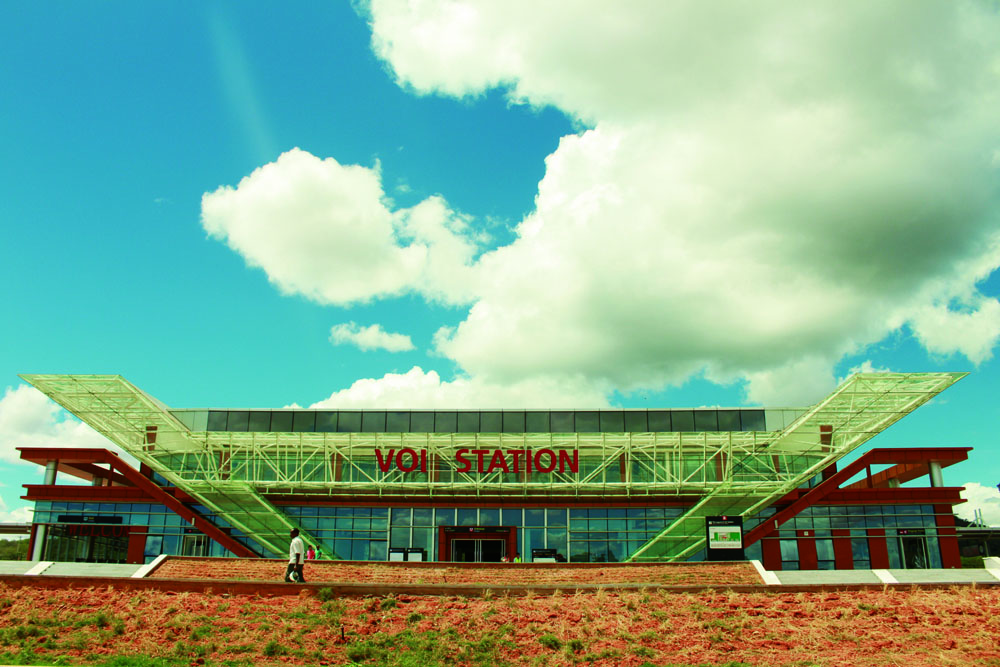
Stations with distinctive features on the Mombasa-Nairobi Railway
Luto is a hotelier whose business was doing so badly in the past that he once thought of closing the hotel. When the SGR began to be built, he saw new possibilities. He thought after the work was over, the economic development of the town would be very different and there would be a big increase in the number of guests staying at his hotel.
He renovated the hotel in anticipation and his assessment turned out to be remarkably prophetic.
Rides on the Mombasa-Nairobi Railway have become a popular tourist attraction. During the 2019 Easter holiday, Nairobi-Mombasa tickets sold out one month in advance, and the hotel occupancy rate in Mombasa was over 90 percent.
In CNN Travel’s May 2019 list of the “20 best things to do in Kenya”, a ride on the Mombasa-Nairobi Railway comes fifth. British broadsheet The Daily Telegraph also mentions a ride on the SGR as one of the 13 most attractive railway journeys in the world in a 2019 report.
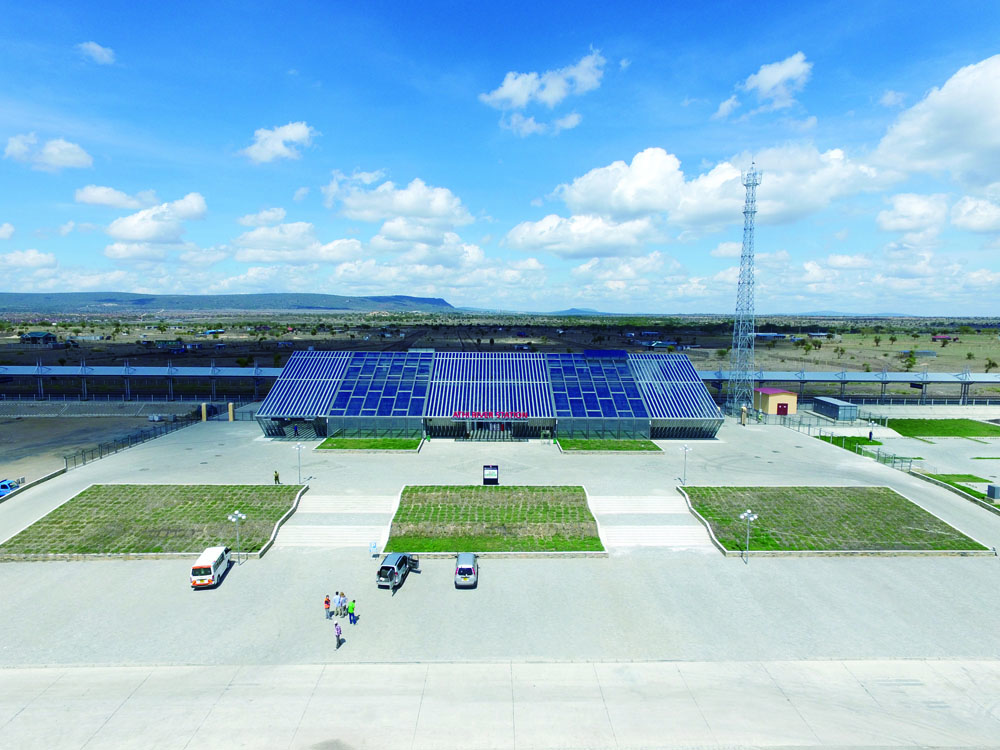
Stations with distinctive features on the Mombasa-Nairobi Railway
The SGR has boosted the development of the local logistics industry. Goods loaded in Mombasa in the morning can be transported to Nairobi in the afternoon and logistics costs have been slashed by up to 40 percent. The transportation efficiency from the port to the hinterlands of East Africa has improved significantly. With an improved East African railway network and supporting infrastructure, the logistics industry in East Africa is being upgraded and it is anticipated regional economic cooperation and cultural exchanges will reach a new high.
The Mombasa-Nairobi Railway has promoted Kenya’s economic development and ushered in a new era of development in Kenya, improving the national image. When a Harvard Business School delegation traveled on the SGR during their visit to Kenya, they showed keen interest in the Sino-Kenyan cooperation and said they would include the SGR as a classic case study in the business school.

Passengers travel in comfort on the Mombasa-Nairobi Railway.
The development of the Mombasa-Nairobi Railway is integrated with the development of the Port of Mombasa and the Mombasa Special Economic Zone.“The Mombasa-Nairobi Railway will write the history of Kenya in the next 100 years,” President Kenyatta said emotionally.
Zheng He, a renowned Chinese admiral and navigator during the Ming Dynasty who made seven voyages around the Indian Ocean, reached Mombasa in 1421. The voyage was a milestone in the history of the ancient Maritime Silk Road.
Nearly 600 years later, the Mombasa-Nairobi Railway continues the journey of friendship and cooperation for a win-win future.
FOR MORE
Project Overview
The Mombasa-Nairobi SGR is the flagship project of Kenya Vision 2030, Kenya’s development plan from 2008 to 2030 that seeks to transform Kenya into an industrialized and middle-income country by 2030. The SGR is also Kenya’s largest infrastructure project since independence in 1963. Built and operated by China Road and Bridge Corporation, a subsidiary of China Communications Construction Company, the project kicked off in December 2014, and was completed two and a half years ahead of schedule. It was officially opened in May 2017. The SGR was shortlisted by American engineering magazine Engineering News-Record as the world’s best railway project in 2018.
Each SGR freight train has a capacity of 4,000 tons and can carry 108 TEUs. Their maximum speed is 80 kilometers per hour. Each passenger train can carry 1,096 people and the maximum speed is 120 kilometers per hour. By June 30, 2019, the SGR had transported 3 million passengers and 5 million tons of freight in 761 days of safe operation. At present, the SGR operates 4 passenger trains and 14 freight trains daily, with the average occupancy rate of the passenger trains being over 90 percent.
More than 300 local enterprises and 1,200 local suppliers participated in the construction of the SGR, together creating more than 46,000 direct and indirect jobs. More than 90 percent of the employees are locals. The project has also trained 5,000 local personnel in railway operation and maintenance.


